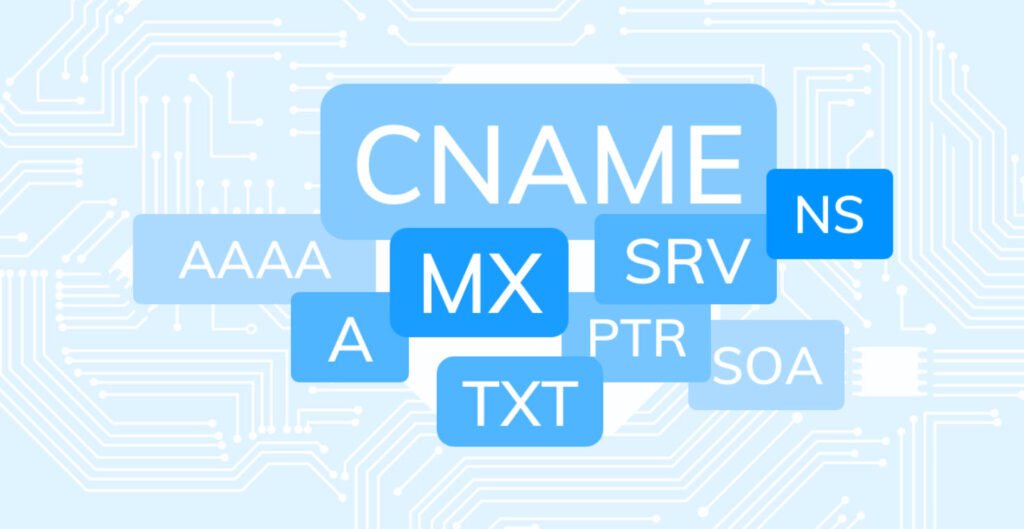
Domain Name System (DNS) records play a crucial role in the functionality and organization of the internet. They serve as the key to translating human-readable domain names into IP addresses, facilitating seamless communication across the vast web.
In this article, we will explore into the intricacies of DNS records, exploring their types, functions, and the significance they hold in the structure of the internet.
The Foundation: Top-Level Domains and Second-Level Domains
At the core of the DNS hierarchy lie top-level domains (TLDs), denoted by familiar extensions like ‘.com,’ ‘.net,’ and ‘.org.’ These TLDs are situated at the highest level of the internet domain system, with the root domain represented by a simple dot (‘.’). Directly beneath TLDs are second-level domains (SLDs), such as ‘org.uk’ or ‘co.jp,’ which further refine the address space.
DNS Zones: Hosting Records for Specific Domains
A DNS zone is a designated space responsible for hosting the DNS records associated with a particular domain. Consider the example of ‘yahoo.com,’ where records like ‘mail.yahoo.com’ might point to their email servers. These records are instrumental in directing traffic to the intended destinations within the domain.
Unpacking DNS Records: Names, Types, and Services
DNS records are defined by relative names and types, each serving a specific purpose corresponding to a particular service. Some of the common DNS record types include:
1. A and AAAA Records
These records associate a domain name with an IPv4 (A) or IPv6 (AAAA) address, facilitating the mapping of human-readable names to machine-readable IP addresses.
2. CAA Records
Certificate Authority Authorization (CAA) records empower domain owners to specify which Certificate Authorities are authorized to issue certificates for their domain. This helps prevent unauthorized certificate issuances.
3. CNAME Records
Canonical Name (CNAME) records create an alias for a domain, redirecting traffic from one domain to another. For instance, a ‘www’ CNAME record might point to the same location as the primary domain.
4. MX Records
Mail Exchange (MX) records identify mail servers responsible for receiving emails on behalf of the domain. They play a crucial role in email delivery.
5. NS Records
Name Server (NS) records indicate the authoritative DNS servers for a domain, providing information on where to find the DNS information for that domain.
6. SOA Records
Start of Authority (SOA) records define the authoritative DNS server for a particular zone, containing essential information about the domain and the zone.
7. SPF Records
Sender Policy Framework (SPF) records specify authorized email servers for a domain, helping prevent email spoofing and phishing.
8. SRV Records
Service (SRV) records are used to specify the location of servers for various services, contributing to the efficient routing of requests.
9. TXT Records
Text (TXT) records map domain names to arbitrary text strings and are employed in applications such as SPF and DomainKeys Identified Mail (DKIM).
Time-to-Live (TTL): Managing Cache Duration
The Time-to-Live (TTL) parameter in DNS records specifies how long a record is cached by clients before being re-queried. This value, measured in seconds, ranges between 1 and 2,147,483,647 seconds, influencing the efficiency and responsiveness of the DNS.
Wildcard Records: Handling Dynamic Subdomains
Wildcard records, denoted by ‘*’ in the query, allow for a flexible response to queries with matching names, providing a practical solution for managing dynamic subdomains.
Conclusion
In essence, DNS records form the backbone of the internet’s addressing system, facilitating seamless navigation and communication. From directing web traffic to ensuring secure email delivery, each record type serves a specific purpose in the intricate web of digital connectivity.
Understanding the nuances of DNS records is essential for web administrators, developers, and anyone navigating the complexities of the online world.
You may also like:- How To Fix the Crowdstrike/BSOD Issue in Microsoft Windows
- MICROSOFT is Down Worldwide – Read Full Story
- Windows Showing Blue Screen Of Death Error? Here’s How You Can Fix It
- A Guide to SQL Operations: Selecting, Inserting, Updating, Deleting, Grouping, Ordering, Joining, and Using UNION
- Top 10 Most Common Software Vulnerabilities
- Essential Log Types for Effective SIEM Deployment
- How to Fix the VMware Workstation Error: “Unable to open kernel device ‘.\VMCIDev\VMX'”
- Top 3 Process Monitoring Tools for Malware Analysis
- CVE-2024-6387 – Critical OpenSSH Unauthenticated RCE Flaw ‘regreSSHion’ Exposes Millions of Linux Systems
- 22 Most Widely Used Testing Tools








